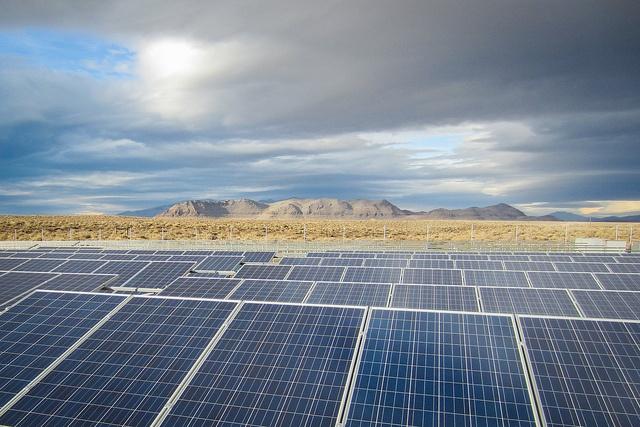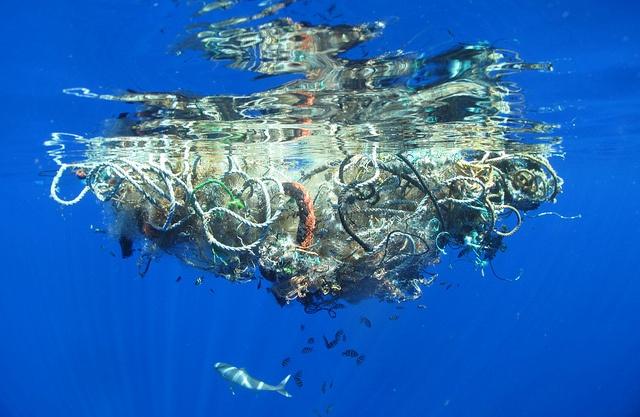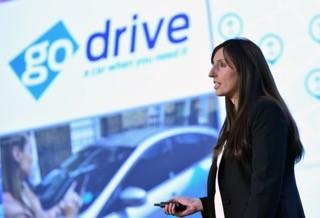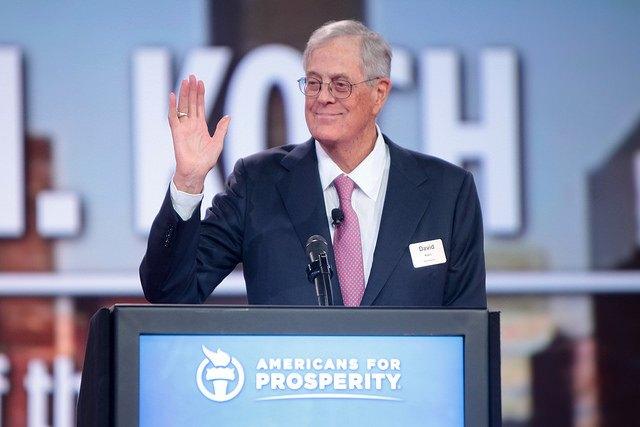Embracing Systemic Thinking for Our Firms of the Future


By Giles Hutchins
Many experts now point to a great transition unfolding locally and globally, in business and society. One important aspect of this transition is that our corporate logic -- the logic underpinning our prevalent way of organizing and operating in business -- is shifting from mechanistic management logic to the logic of living systems.
Too many of today’s organizations find themselves caught up in a top-down, hierarchic, KPI-obsessed, siloed, control-based, defensive and reactive fire-fighting mindset that is actually undermining our organizational and personal vitality and resilience. It is this mechanistic logic that is preventing us from adequately dealing with the complex, interconnected problems we now face.
With this urgent frame front-of-mind, I recently interviewed one of the world’s most well-respected systems-theorists, Fritjof Capra.
Giles Hutchins: How do our practitioners, leaders, managers and entrepreneurs best apply ‘systemic thinking’ with regard to this shift in corporate logic from mechanistic to living systems? Any tips?
Fritjof Capra: Business organizations need to undergo a fundamental transformation today for two reasons: to adapt to an ever more complex global business and organizational environment, and to become ecologically sustainable. This is where a ‘systems view of life’ can provide important conceptual tools.
Systems-science teaches us that living systems continually regenerate themselves by transforming or replacing their components. They undergo continual structural changes while preserving their web-like patterns of organization. Understanding life means understanding its inherent change processes. Once we have that understanding, we can begin to design processes of organizational change accordingly and to create human organizations that mirror life's adaptability, diversity and creativity.
GH: In your most recent book, "The Systems View of Life," you and your co-author Pier Luigi Luisi explore organizations as multi-layered systems of generative cycles nested within larger systems. While you are keen to point out that organizations are quite different from organisms, you do describe them as living systems. Can you expand a little on this?
FC: This is a difficult issue, which I discuss in detail in our book. To summarize, all human organizations have a dual nature. On the one hand, they are social institutions designed for specific purposes, such as making money for their shareholders. At the same time, organizations are communities of people who interact with one another to build relationships, help each other, and make their daily activities meaningful at a personal level. These communities, known as ‘communities of practice’ to organizational theorists, are informal social networks.
Now, systems-science teaches us that the network is the basic pattern of organization for all living systems. This means that a business organization will be alive — i.e. flexible, resilient and creative — when it recognizes and empowers the living networks, or communities of practice, that exist within itself. Leadership, in the systems view, means facilitating the emergence of novelty — in other words, creativity — within these communities of practice. ‘Emergence’ is a key concept of the systems view of life.
GH: As we shift from mechanistic ways of operating and organizing toward living-systems logic, we shall need to learn and embrace new forms of leadership. What are the qualities of leadership you see as important for facilitating the emergence of novelty, flexibility and creativity?
FC: To facilitate emergence effectively, leaders need to recognize and understand the different stages of this fundamental life process. Emergence requires an active network of communications. Facilitating emergence, therefore, means first of all building up and nurturing such networks of communications. In addition, the emergence of novelty is a property of open systems, which means that the organization needs to be open to new ideas and new knowledge.
Facilitating emergence includes creating that openness — a learning culture in which continual questioning is encouraged and innovation is rewarded. The experience of the critical instability that precedes the emergence of novelty may involve uncertainty, fear, confusion, or self-doubt. Experienced leaders recognize these emotions as integral parts of the whole dynamics and create a climate of trust and mutual support.
During the change process some of the old structures may fall apart, but if the supportive climate and the feedback loops in the network of communications persist, new and more meaningful structures are likely to emerge. When that happens, people often feel a sense of wonder and elation, and now the leader's role is to acknowledge these emotions and provide opportunities for celebration. Leaders who facilitate emergence need to be aware of the detailed dynamics of all these stages.
GH: Is a clear, yet evolving, organizational sense of purpose key to ensuring the cohesion of these corporate living systems?
FC: It is. Over time, an organization’s communities of practice create a certain culture, as all social networks do. The critical task for leaders is to infuse this culture with an organizational sense of purpose.
GH: You refer to organizations creating the conditions conducive for life to flourish, which I refer to as ‘regenerative business’ – the new frontier for future-fit business. Can you expand a little on what you envisage as the core aspects of ‘regenerative business’?
FC: All living systems continually regenerate themselves while preserving their web-like pattern of organization. This coexistence of stability and change is a key characteristic of life. "The Systems View of Life" explores this in detail and in this way provides valuable lessons for leaders and managers.
GH: Do you know any examples of organizations that successfully embed this systems view of life, to embrace stability and change effectively during these volatile times?
FC: Today, there is a growing number of organizations embodying key properties of living systems — decentralized structures, communities of practice, and self-organizing teams following simple guiding principles rather than detailed instructions. Examples would be Gore & Associates (manufacturers of Gore-Tex), Ideo (a design company in San Francisco), Vagas (a Brazilian employment agency), Impact Hub (a global network of social-enterprise community centers), Zentrum für Integrale Führung (a consulting group in Austria), and Amana-Key (a consulting group in Brazil).
GH: What is your view on contemporary capitalism? There are a number of interesting innovations capable of transforming capitalism. Such examples include the take-up of B Corps and social enterprises as a shift away from the singular-focus on maximizing returns for shareholders, as well as different ownership structures such as collaborative commons, crowd- and open-sourcing, and a hybrid of private and social ownership business models where the intent is on generating wellbeing rather than financial returns. What are your views on the current business landscape, and the challenges and opportunities that lie ahead for us?
FC: The idea of unlimited economic and corporate growth, which is absurd on a finite planet, is built into the very structure of today’s corporations. This structure can be, and urgently needs to be, changed. The examples you cite are examples of such changes.
They have been explored in great detail in a very inspiring book by Marjorie Kelly, "Owning Our Future." In it she discusses and illustrates with countless examples, new ownership designs, which she calls ‘generative ownership’ to contrast it with the ‘extractive ownership’ embodied in the conventional corporate ownership model. I review her work in some detail in our textbook, and Kelly also wrote a guest essay for us.
GH: ‘Systemic thinking’ requires us to ‘think’ in terms of relationships, context, patterns and inter-relating processes. The take up in business of initiatives such as biomimicry, industrial ecology, zero-waste, closed-loop economics and cradle-to-cradle clearly help put this thinking in to practice. Is there also a ‘feeling’ aspect to this, a deeper felt-sense, an embodied ‘way of being’ that needs to accompany this cognitive shift in our ‘way of doing’? If so, how would you describe such as shift in ‘way of being’?
FC: In today’s global crisis, we need very special kind of leaders who are ecologically literate and capable of thinking systemically; leaders, furthermore, who are guided by a "moral compass," in the memorable words of Václav Havel. I see this moral compass as that deeper-felt sense, this embodied way of being, that you refer to. The ethics we need today must honor human dignity and ecological sustainability. Such ethics are presented in great detail in the Earth Charter, a global declaration of 16 values and principles for "building a just, sustainable, and peaceful world." It is a perfect summary of the ethics we need for our time.
GH: Your latest project which is based on "The Systems View of Life" is called Capra Course, an on-line course of twelve lectures launched this April. Who is the course aimed at, and could you explain its relevance, timeliness and importance for these participants?
FC: In my online course, I will teach the essential concepts of the systems view of life in twelve 40-minute lectures, and will discuss them with the course participants in special online forums. I have developed my synthesis of this new scientific understanding of life over many years and have published it at various stages.
Capra Course is my first opportunity to teach the full synthesis to a worldwide audience, which I find tremendously exciting. In the course I specifically emphasize the critical role of systems thinking to solve the major problems of our global crisis, which are systemic problems — all interconnected and interdependent — and require corresponding systemic solutions. Capra Course will give participants the conceptual tools to understand the nature of our systemic problems and to recognize the systemic solutions that are being developed by individuals and organizations around the world.
This interview was recently conducted by speaker, author and adviser Giles Hutchins who blogs at www.thenatureofbusiness.org.
Image credit: Pixabay
Supplier non disclosure hindering climate risk management


The largest ever study of climate change data from major corporates and their suppliers has uncovered a significant blindspot of supply chain risk.
While leading companies such as Dell, Unilever and Walmart are establishing the extent to which impending climate regulation will impact their business, half their key suppliers are failing to disclose climate information, impeding efforts to understand and manage climate risk, finds a new study (produced by CDP and written in partnership with BSR).
The analysis has been created on behalf of 75 multinational purchasing organisations and assesses how prepared companies and their global networks of suppliers are for new regulation and carbon emission reductions following the UN's international climate deal.
Analysis of the suppliers that have disclosed demonstrates the scale of risk now facing companies: close to three quarters (72%) state that climate change presents risks that could significantly impact their business operations, revenue or expenditure. The majority (64%) of suppliers specifically identify climate regulation as a risk, with the most commonly cited consequences being fuel, energy and carbon taxes.
However despite the high perception of climate related risk, less than half (45%) the participating suppliers have set a target to reduce their emissions and just one third (34%) have lowered their GHGs in the past reporting year.
Access the full report here.
Nevada Guts Payments for Rooftop Solar, Installers Call It Quits


Chalk one point for Nevada’s utility monopoly; zero for rooftop solar. In a strange decision that is forcing solar businesses in the sunny state of Nevada to close their doors, the Public Utilities Commission of Nevada voted unanimously earlier this month to slash net-metering payments to homeowners who have invested heavily in rooftop solar.
The commission’s decision, which affects the rebates that homeowners receive for solar-generated energy, comes after months of warnings by solar advocates that the state’s net-metering “cap” (the 3 percent maximum payout for solar reimbursement across the state) was too low. When the cap was finally reached, the commission responded by quickly extending payments, prompting a face-off between rooftop solar advocates and supporters of the state's more conservative utility monopoly, which lobbied hard for a change to the rules.
And they won. After the legislature passed a bill that effectively gave the utility commission the power to make changes, solar customers found the returns on their solar investments suddenly slashed. In a record 3-0 vote, the commission voted not only to raise user fees, but also to amend the amount that customers would receive from utility companies. It also made the decision retroactive, so users saw their return on solar drop literally overnight.
The impact on the solar industry has been decisive. The state’s three largest solar installers have said they are pulling the plug in Nevada, resulting in a potential loss of some 6,000 jobs and leaving the Nevada solar industry in flux.
Net metering has been around in Nevada since the late 1990s, when the state established rules governing solar electricity reimbursements. The rules have been adjusted several times over the years, but the solar industry has remained robust -- until now. In fact, until the latest decision, Nevada figured among the top states for consumers interested in solar power. That translated to 974 megawatts of solar energy in 2014, enough to power 150,000 homes. It has also realized more than $500 million in sales since solar was introduced commercially in the state.
With more than 100 solar companies in the state, Nevada was due to exceed its third-rank standing in solar power.
"Just weeks after Congress voted with bipartisan support to extend the federal tax credit for solar, Gov. Sandoval's Commission is moving the state backwards," notes SolarCity, one of Nevada's strongest solar companies. "The governor's and commission's support for a de facto ban on rooftop solar defies public opinion, including the opinion of the members of his own party. According to a recent poll by Moore Information, 73 percent of registered Nevada Republicans support the state's previous rooftop solar rules."
Local utility NVEnergy, which supported the new rules, defended the change -- calling it an appropriate decision. "This approach is fair because it recognizes that the energy and suite of energy services provided by NV Energy to net-metering customers differs from the intermittent excess energy delivered to NV Energy's system."
Time may tell. For fairness to prevail, companies will need to be willing to provide services in state, and latest indications suggest that not all are convinced the commission's dramatic change-of-heart will support that robust growth in Nevada's rooftop solar market.
Images: BlackRockSolar
The Growing Ocean Plastic Crisis


Plastic: cheap, easy to clean, but with a dark, huge hidden cost. Vast amounts of plastic are turning our oceans into a polluted, inhospitable mess, and without strong action by governments and companies, it could get a whole lot worse.
A study released last week by the Ocean Conservancy shows our stark future – if we don't make drastic changes soon, by 2050 our oceans will have more plastic in them than fish.
The problem may seem big, but actually, just five countries alone are responsible for 60 percent of the plastic in our ocean. They are all large, coastal developing nations in Asia: China, Indonesia, the Philippines, Thailand and Vietnam.
I lived in one of the top plastic polluters, Indonesia, for a year and a half and saw the problem firsthand. Basically, Western-style consumerism entered the country without a corresponding investment in waste management systems. In essence, what you got was Western waste – plastic packaging, wrap and bottles – without any place for Indonesians to put it.
This waste would end up on roadsides, in gutters or clogging canals.
Much of this waste comes from big, global companies. PepsiCo, Coca-Cola and Unilever have all flooded developing-country markets with cheap toothpastes, sweets and bottled drinks using cheap plastic packaging, but they have not made any real investment into ensuring that this waste does not end up polluting oceans and waterways. The reason is simple: It would limit their market if they could only sell where recycling systems existed, and they are not responsible, in the current economic system, for what consumers do with the said plastic packaging.
That being said, some companies are working with NGOs to make a difference. For example, Dow Packaging:
“We’re committed to working toward a future of a plastic-free ocean,” said Jeff Wooster, global sustainability director at Dow Packaging, in a statement with the Ocean Conservancy. “Companies don’t make plastic with the intent of it ending up in the ocean, and we acknowledge the strong role industry must play in order to help eliminate ocean plastic waste by 2035.”
There are also examples of positive ground-action, even in Indonesia. The country's second largest city, Surabaya, led by popular female Mayor Tri Rismaharini, has decided to tackle its waste problem head-on through an innovative waste management system that brings together government, private companies and the community.
Globally, we need to change our paradigm. The move by the United States to ban plastic beads is a step in the right direction. Plastic shouldn't be so cheap – the externalities make it far more costly to society than biodegradable or reusable packing. Companies need to step up and ensure that their packaging doesn't end up in oceans. Otherwise, our oceans may become one giant sea of plastic – and that isn't good for anyone.
Image credit: Steven Guerrisi via Flick
Zero-Emissions Smart Mobility and Your City


Google, Ford, Apple, Amazon, Tesla and General Motors are just some of the companies on the verge of introducing zero-emissions smart mobility technologies. These innovations will seamlessly integrate customer transportation needs with the optimal mobility choice -- think: Amazon Prime for vehicle and urban transportation choices, delivery and payment.
Zero-emissions smart mobility will enable a quantum leap in human productivity, quality of life and environmental sustainability. It will deliver lower consumer costs, increased safety, more convenience, enhanced productivity and cleaner air. Early adopting cities will win competitive economic advantages. The cities that do not adopt this technology may end up being the 21st century’s version of the Industrial-Age mill town.
Imagine
Imagine this weekend scenario. Friday is your wedding anniversary. A bright red electric convertible arrives at your home. You drive your spouse along a scenic highway as you enjoy the sunset and the fun of accelerating at the speed of electrons. You leave the red convertible outside the restaurant where you are celebrating your anniversary. It then moves on to its next customer or a parking space. After a romantic dinner with cocktails and a bottle of wine, you walk out of the restaurant and get into an autonomous driving car that safely drives you home and then departs.
On Saturday morning, a full-size hybrid pickup truck arrives to take the family, and your boat, to the lake and then back home. A small electric van arrives on Monday morning to take you -- and neighbors who live within a mile of your home -- to the light-rail station, just in time to catch the 7:15 train to your city-center office.
You paid for all of these vehicles through a Ford, Amazon or Apple app on your phone. The digital receipt has a running year-to-date savings total earned from not owning a vehicle. You smile because this service is so much easier, more productive and enjoyable than owning a car and a truck, even if it didn’t save a dime.
Now stop imaging, and recognize that this is not a concept in a Power Point presentation. Ford is piloting a similar mobility-as-a-service program in London.
Ford’s London pilot program
I interviewed Alicia Agius, the project lead for Ford's GoDrive program in London. GoDrive is a pilot project that is testing consumer response to integrated technology solutions designed to enhance urban mobility. I was blown away by how close Ford is to commercializing mobility as a service on a global scale.
GoDrive brands itself as a “car when you need it.” It provides on-demand access to a car from 25 locations conveniently located across London. The consumer experience begins by downloading the Ford GoDrive app on a smartphone. Working through the app, a customer picks a vehicle, unlocks it and turns it on. There is no reservation process. There is no upfront membership fee to use the service. You pay by the minute. If you use a car for 15 minutes, then you pay for just 15 minutes of use and not for an hour or a day of use.
It is a one-way service. No need to bring the car back to the point where you picked it up. You drive to your desired location that should have a Ford GoDrive facility within walking distance. You park the car, and the Ford app bills your account. The considerable urban stress of finding a parking space is eliminated. The service is cheaper than Uber, ZipCar-like rentals or cab services, and it is easier to access.
Introducing electric cars as part of the GoDrive program
Another mission of the GoDrive program is to introduce consumers to electric cars. Half of the cars in the service are gasoline fueled. The other half are electric. Here is what Ford saw:
- 44 percent of first-time customers choose electric
- 74 percent choose electric after their first experience with electric
- 61 percent of customers are using electric vehicles
What Ford learned is that mobility-as-a-service eliminates the perceived customer barriers to using electric cars. Electric cars offered through mobility-as-a-service eliminates the consumer concern over the potential higher initial purchase cost of electric cars. The issues of range anxiety and recharging access are also eliminated. The typical drive is about 40 miles, and that is at least half of a fully charged electric car’s range. The GoDrive program handles recharging cars back to full charge.
Ford surveyed its customers to gain their reactions to driving an electric car. Some of the comments were:
- "Quite cool to be driving an electric."
- "Easy to drive and I would certainly use it again."
- "I took an electric car as I wanted to relax and they are quiet."
Agius reports that GoDrive customers found electric cars to be “nippy, quiet and lovely to drive.”
Why mobility as a service is a 21st-century mega-trend
The future of the auto industry, and your city, is in the triple integration of zero-emissions smart vehicles, the Internet of Things, and mobility-as-a-service programs to deliver these solutions:
- Congestion reduction
- Increased human productivity
- Reduced, or eliminated, transportation-sourced air pollution
How soon could that be? In 2007 Steve Jobs introduced the iPhone. In less than 10 years, we now have digital mobility as a service. It can happen that fast in the Information Age!
Image credits: 1) Eric Bennett 2) Ford
The 'Deep Pockets' Behind the Oregon Takeover


From a corporate social responsibility angle, Arizona businessman Ammon Bundy's motivation for invading the Malheur National Wildlife Refuge is clear: He has repeatedly said that he wants to help the local community in eastern Oregon. However, Mr. Bundy seems to have unique notions about who needs what kind of help. And just when you thought he could not find another bucket to step in, well, there he goes again.
The latest misadventure happened on Friday, when Bundy tried to orchestrate an on-camera interview with an FBI negotiator, only to be turned down unceremoniously over the phone. Instead of face-to-face drama, Bundy gave the media nothing but yet another statement of made-up mumbo jumbo about the constitutional authority of county sheriffs that only makes sense if you slept through your 4th grade civics class.
From that non-event, Bundy took the media over to the office of a genuine sheriff, Harney County Sheriff David M. Ward, who also refused to meet with him.
Meanwhile, Harney County officials have announced that another in a series of public information meetings will be held on Monday evening, but this time attendance is strictly limited to community members who have ID to prove their residency, and firearms are prohibited. Both policies are clearly intended to exclude Bundy and his group of miscreants, so now the whole community is on record in refusing to meet with him.
To hammer home the point, local officials agreed to allow Oregon Public Broadcasting's "Think Out Loud" program broadcast and moderate the event, providing community members with a national platform on which to describe exactly how they feel about Bundy and his group.
Despite the fact that nobody wants him around, Bundy stubbornly refuses to leave. So, what's going on here?
The Malheur National Wildlife Refuge is a honey trap
For those of you new to the topic, the Malheur National Wildlife Refuge is located in Harney County, Oregon. Refuge personnel recently vacated the premises after receiving tips that trouble was brewing, and sure enough, on Jan. 3 a truck-fleet repair company owner from Arizona named Ammon Bundy led a group of heavily-armed men to the site and occupied the buildings.
An armed invasion of federal property necessarily involves federal authorities, but while the FBI has been operating in support of local law officials from the start, Ammon Bundy and his small group of followers are allowed to come and go as they please. Despite the clearly criminal nature of their actions at the refuge, so far only one arrest has been made, when a follower was apprehended in the nearby town of Burns for unauthorized use of a federal vehicle.
Local residents, officials and elected leaders on up to the governor of Oregon are becoming increasingly frustrated with the FBI's strict hands-off policy, but two critical things are happening because of that policy.
First, day after day Ammon Bundy and his initial group of followers have been building up a solid wall of federal charges against themselves. In the past week, for example, Bundy's group has released video of themselves handling Pauite artifacts stored at the refuge, and they've used heavy equipment to carve a new road through an important archaeological site.
Second, and more to the honey-trap point, Ammon Bundy's repeated calls for support are beginning to have some effect, and like-minded souls have begun to turn up in Burns and at the refuge, providing the FBI with a very convenient way to assemble a head count of every whackaloon in the U.S. who is ready and eager to participate in armed sedition, while affording those so inclined with ample opportunities to entangle themselves in Ammon Bundy's growing net of criminal activity -- which, by the way, has been liberally documented by the group's own YouTube videos as well as by the media.
All of this makes it evident that federal agencies have learned a lot from their notorious 2014 armed standoff in Nevada with Ammon Bundy's father, Cliven Bundy. That encounter was relatively brief, and while weapons were involved, the feds seem to have decided that the episode was not egregious enough to build solid public support for their rather extensive case against the rancher's theft of federal property.
The Ammon Bundy situation is altogether different. The local community is solidly against him, his father's supporters have disavowed him, and he is giving the feds plenty of criminal charges to chew on even if they decide not to nail him on any weapons-related offenses. The 1979 Archaeological Resources Protection Act, for example, can kick in a felony penalty of up to $20,000 and one year in prison for a first offense, and it exposes the offender to civil action by both the federal government and Native American authorities.
A second felony offense, by the way, involves a fine of up to $100,000 and five years in prison.
Ouch!
The deep pockets behind the takeover
That finally brings us to the so-called "deep pockets" behind the takeover. In a media interview posted on YouTube, Ammon Bundy had this to say about support for his actions (go to the one-minute mark to catch it):
"We have a lot of political support, but I'll let them be the one to step up ahead. We also have a lot of deep pockets if you will, financial support that are willing to invest in the people of Harney County, so that they can get very low-interest loans so that they can buy cattle; they can buy equipment; they can [unintelligible but sounds like "buy mules"]; and pay employees. And then we also have support in other ways across the country."
In terms of support from elected politicians, the reaction to Ammon Bundy has ranged from almost total silence to active condemnation, even among leading Republicans who once spoke in favor of his father. That's not exactly a reluctance to "step ahead." That's a nearly bottomless void of support with the exception of Bundy's own narrow sphere of followers.
As for the deep pockets, on a first listen it might appear as if Bundy is referring to wealthy interests that are backing his efforts, but as far as we can make out, he's just promising that a low-interest loan program for local businesses will materialize -- perhaps modeled on the $530,000 loan guarantee that Bundy himself received from the federal Small Business Administration back in 2010.
Aside from ranchers, the intended recipients of this cash infusion would presumably be two other business sectors that are on Bundy's short checklist of people to help, those being miners and loggers.
However, given the trend toward consolidation in the mining and logging industries, it's not evident that any kind of loan program would directly benefit all that many small, local business owners in the area of the Malheur refuge.
Ironically, the local business owners who would most likely benefit directly from a low-interest loan program are probably the ones who Bundy has completely failed to acknowledge over the past three weeks, namely, people who don't own a ranch, a mine or a logging company.
With that in mind, here's a shout-out to the Steens Mountain Brewing Co., a new "nanobrewery" that recently opened in Burns. The super-tiny but prolific brewer seems to be off to a great start, and is looking forward to expanding with the help of an online fundraising campaign, so keep your eyes on Kickstarter for a chance to support -- really support -- the local business community around the Malheur refuge.
If you just can't wait to pitch in, check out the G.O.H.O.M.E. campaign started by two Oregon brothers. Locals and other supporters will continue to add to the pot each day the occupation continues. All funds go to benefit the Malheur refuge and the local Paiute community, as well as a gun control reform group and the Southern Poverty Law Center, the longstanding civil rights organization that tracks hate groups.
Image: via U.S. Fish & Wildlife Service.
Ceres: U.S. Oil and Gas Companies Are Not Adequately Disclosing Climate Risk


Climate change poses risks to the operations of oil and gas companies. Yet, large U.S. oil and gas companies are not giving adequate disclosures to their investors about climate-related risks to their operations. Not one of the 23 American oil and gas companies in the S&P 500 index included the potential impact of an international agreement to limit climate change in their most recent disclosures.
Ceres, a nonprofit organization focused on sustainability leadership, launched a new version of its Securities and Exchange Commission (SEC) Sustainability Disclosure Search Tool. The tool is a collaboration with CookESG Research and helps users explore the disclosures oil and gas companies give to investors about carbon asset risk. Ceres defines carbon asset risk as “the risk that the value of extracted and un-extracted fossil fuels, and assets for generating power from fossil fuels, will be impaired or even stranded under various carbon constrained scenarios.”
Playing around with the tool reveals a few disturbing things about ExxonMobil and Chevron, the largest American oil- and gas- producing companies, respectively. ExxonMobil holds nearly a third of the reserves accounted for by S&P 500 companies for 2014. However, in its 2015 10-K report to shareholders, the company only stated, “International accords and underlying regional and national regulations covering greenhouse gas emissions are evolving with uncertain timing and outcome, making it difficult to predict their business impact.” Ceres notes that the statement “appears verbatim” in all of Exxon’s 10-K reports from 2010.
Despite the fact that Chevron holds 11 billion barrels of oil equivalent in developed and undeveloped proven reserves, the oil company stated in its 2015 10-K report: “Continued political attention to issues concerning climate change, the role of human activity in it and potential mitigation through regulation could have a material impact on the company's operations and financial results. International agreements and national or regional legislation and regulatory measures to limit greenhouse emissions are currently in various stages of discussion or implementation.” It’s nearly the same statement repeated in its 10-K filings over the last six years.
Investors and legislators are concerned about climate risk disclosure
Last spring, 62 institutional investors representing almost $2 trillion in assets urged the SEC to push for oil and gas companies to better disclose climate change risks. The signatories to the seven-page letter pointed out that climate change risks will “profoundly affect the economics of the industry." The “risk of reduced demand for oil, uneconomic projects and stranded assets … is material to the companies and their investors, as it directly affects the profitability and valuation of the companies,” they added.There are reasons why investors are concerned with the business-as-usual approach of oil and gas companies, according to Ceres:
- Oil prices: While companies base their investment decisions on prices continuing to rise, the reality is that they are volatile. Presently, oil prices are below $30 a barrel, down from $110 per barrel 18 months ago.
- Demand: Fossil fuel demand is currently being affected by policies related to air quality, energy efficiency, renewable energy and subsidy reform. The EPA standards for power plants in the U.S. are a good example.
- Stranded assets: New investment in high-cost, high-carbon assets could end up stranded as global demand for fossil fuel declines in the future.
- Physical risks: Climate change brings risks to operations and those risks will be accelerated as companies invest in higher-cost, higher-carbon projects like oil sands.
- Growth of renewable energy: Renewable energy accounted for most of new electrical generation capacity in recent years because cost has dramatically declined. Of the $10 trillion projected investment in power generation through 2035, 71 percent is expected to be in clean energy.
Some U.S. legislators are also concerned with a business-as-usual approach. In November, four members of Congress sent a letter to the SEC asking the federal agency to investigate ExxonMobil’s past federal filings to see if the oil and gas giant violated securities laws by not adequately disclosing climate change risks to its operations.
The letter cited recent media reports about ExxonMobil that suggest the company publicly questioned climate change science while factoring impacts into its plans. “As members of the House Oversight and Government Reform Committee, we are deeply troubled by recent media reports alleging that ExxonMobil intentionally obfuscated the role of fossil fuels in influencing climate change,” the letter stated.
Image credit: Flickr/Ken Hodge
David Koch Leaves Museum Board Amidst Controversy


Last week, David Koch resigned from the board of the American Museum of Natural History. Koch, along with his brother Charles, owns Koch Industries, a petro-chemical conglomerate that is the second largest privately-owned company in America. The two have received a great deal of attention for their efforts to use their vast fortune to push the American political dialog sharply to the right. Koch sat on the museum’s board of directors for 23 years.
One of the Koch Brothers' best-known efforts is their funding of the climate-denial machinery conducted under the banner of the Americans for Prosperity group. These actions fly in the face of all serious science, in which the overwhelming majority of those actually qualified to have an opinion on the subject agree. Because of this anti-science stance, environmental groups among others have been clamoring for his departure from the museum’s board.
Koch, who holds a master’s degree in chemical engineering from MIT, almost certainly understands the science. It’s most likely because it does not fit with his libertarian ideology, or for that matter, the financial goals of his company, that he chooses to not only ignore it, but to defy it.
This ‘disingenuosity’ has led to multiple ironies, both in his support of the museum and in his resignation from its board. It led Mark Antonio Wright, for example, to comment recently in the right-wing National Review, “Let me get this straight, ‘members of the scientific community’ are upset at a philanthropist who has given tens of millions of dollars to a science museum?”
Indeed they have been, and Mr. Wright knows exactly why, unless he’s been living in a cave. The Kochs have become the principle proponents, indeed the very embodiment, of the idea that wealth trumps truth -- an idea completely antithetical to science and one that, sadly, seems to be catching on again.
Foremost to many will be the question of timing. Why now? The Kochs are nothing if not methodical. Clearly, groups like Greenpeace, which first exposed the Koch Brothers’ shenanigans back in 2010, would like to take credit for the pressure they’ve applied. That certainly must have had an impact. Indeed many on the left are celebrating the announcement. But according to an unnamed spokesman at the museum, “He was not swayed by any of that.”
It may in fact have something to do with a new tactic the Kochs have taken on in their quest to shape American politics in their image. It was described in a recent piece in the New Yorker by Jane Mayer, who also wrote the book, "Dark Money," an exposé of the Kochs' geopolitical machinations.
The Kochs have surely been aware, for some time, that they are widely despised. But, they’ve apparently only recently come to understand that that opinion is standing in the way of achieving their objectives. Therefore, they have set forth in an effort to clean up their image.
Says Mayer, “As the Kochs prepare to launch the most ambitious political effort of their lives, they appear to be undergoing the best image overhaul that their money can buy.” The once-reclusive brothers are now making public appearances everywhere and agreeing to interviews even on supposedly left-leaning outlets like NPR.
Perhaps part of that overhaul is to disengage from the cognitive dissonance of the science museum post, which has become a lightning rod for protest, attracting what they consider the wrong kind of attention.
Playing down their controversial positions, the brothers are now focusing instead on more palatable aspects of their platform, like their longstanding interest in criminal justice reform, their support of the Hispanic nonprofit LIBRE Initiative that emphasizes “economic freedom,” and their donation of $25 million donation to the United Negro College Fund (earmarked for entrepreneurs).
The Kochs, according to Mayer, appear to be taking a page out of John D. Rockefeller’s playbook. Rockefeller used philanthropy to clean up his image after causing widespread misery on his road to fortune. The difference with the Kochs is that they want to clean up their image now so that Americans will open up our doors and let them and their extremist ideas in.
Image credit: Gage Skidmore
Half of U.S. Schools Suffer From Poor Indoor Air Quality


The typical elementary-aged child in America will spend 940 hours in school this year, thus the indoor environment of the school can have a major impact. Although it is commonly known that poor indoor air quality can cause major health issues such as asthma and lung cancer, it is a less known fact that it can degrade productivity, the ability to concentrate, energy levels and even mood.
In fact, mental confusion, reduced mental performance, anxiety and coughing are all common responses to indoor air pollution. Longer exposure can lead to personality changes, impaired memory and slower motor responses -– which can all impact a child’s educational experience and achievement.
There are numerous workplace studies related to indoor air quality. The National Institutes of Health found the impact of poor indoor air quality on work performance to be as high as 6 to 9 percent in resulting loss of productivity. A series of studies by the Lawrence Berkeley Laboratory found that the presence of carpeting and less ventilation lowered typing speed, typing accuracy and proofreading accuracy by 4 percent for each variable.
Indoor air quality characteristics include humidity, temperature, level of pollutants and other factors. A number of maintenance issues can cause or exacerbate poor indoor air quality, such as a leaky roof, inadequate ventilation and excessive use of cleaning chemicals.
Because their bodies are still developing, children are especially vulnerable to the impact of poor indoor air quality. Teachers are also affected, eroding productivity and boosting absenteeism. Schools in particular present unique air-quality challenges, as they tend to have high occupant densities and are sometimes overcrowded. Many schools also have tight budgets, making it difficult to properly address this important issue.
Roughly half of the schools in the United States reported issues related to indoor air quality during a survey by the National Center for Educations Statistics. According to the U.S. Environmental Protection Agency, levels of indoor pollutants are commonly two to five times greater than outdoor levels, and occasionally as much as a 100 times greater. Addressing this important classroom issue can boost both achievement and overall health for children.
Ventilation strategies
The supply of healthy indoor air is paramount for a healthy classroom environment for children. Ventilation dilutes the concentration of pollutants and is one of the most effective strategies in promoting indoor air quality. There is also a connection between a lack of ventilation and the amount of bacteria and viruses in indoor air, which can boost absenteeism.
“Increases in classroom ventilation rates up to approximately 20 [cubic feet per minute (cfm)] per student are associated with improvements in student performance of a few to several percent, with the magnitude of improvement depending on the initial ventilation rate,” reads the Lawrence Berkeley National Laboratory website. “Increases of ventilation rates up to approximately 15 cfm per student are associated with a higher proportion of students passing standardized reading and math tests.”
Schools need controlled and strategic introduction of outdoor air into the conditioned space to ensure suitable indoor air quality. Balanced ventilation systems both supply and remove stale air, without pressurizing or depressurizing spaces.
Zehnder heat recovery ventilation systems (HRVs) or energy recovery ventilation systems (ERVs) have been used in many schools and are effective in promoting both indoor air quality and energy efficiency. These systems supply a constant stream of clean, filtered air throughout the school -- diluting or removing indoor contaminants. Intake air is filtered before entering the school. Fine filters can even be used to remove many common allergens and asthma triggers, such as pollen, mold and dust.
Zehnder HRVs preheat incoming winter air or pre-cool incoming summer air by transferring heat from the warmer airstream to the cooler airstream. ERVs also transfer moisture from the humid airstream to the drier airstream, reducing the need for dehumidification in summer and preserving interior humidity during cold, dry winter. As a result, energy costs are reduced.
Reduce the prevalence of toxins
Chemical pollutants are a major source of indoor air pollution, with studies finding that a typical classroom has between 50 and 300 volatile organic compounds (VOCs) in the air. Common sources include furnishing, finishes, cleaning products and building products.
Using products and materials that release fewer contaminants into the air can boost indoor air quality. Greenguard Gold Certified-products are screened for emissions of more than 10,000 VOCs and meet rigorous product emissions standards.
Image credit: Flickr/Elizabeth Albert
Animal welfare grows in importance to food companies worldwide


Noble Foods, Marks & Spencer, Waitrose and Coop Group (Switzerland) have attained the highest marks in the global Business Benchmark on Farm Animal Welfare report, out tomorrow (26 January, 2016).
Now in its fourth year, the Business Benchmark on Farm Animal Welfare (BBFAW) provides an annual review of how 90 of the world’s leading food companies are managing and reporting their farm animal welfare policies and practices.
The report, which is compiled in collaboration with leading animal welfare organisations Compassion in World Farming and World Animal Protection and investment firm, Coller Capital, reveals that companies are increasing the importance they attach to farm animal welfare.
Indeed, 69% of companies now have published farm animal welfare policies (compared to just 46% in 2012) and 54% of companies have published targets on farm animal welfare (up from 26% in 2012).
Currently, 11 companies occupy leadership positions in the Benchmark’s top two tiers. These companies demonstrate the strongest commitments to farm animal welfare and have well developed management systems and processes. They include Marks & Spencer, Coop Group (Switzerland), Waitrose and Noble Foods in Tier 1,and The Co-operative Food (UK), J Sainsbury, Unilever, Cranswick, Marfrig, McDonald’s and Migros in Tier 2.
Reflecting on these findings, BBFAW Executive Director, Nicky Amos, said: “The results show that it is realistic for companies across the world and in all sub-sectors (retailers, wholesalers, restaurants, bars and producers) to aspire to and achieve high scores in the Benchmark and to recognise the responsibility they hold for the welfare of animals in their supply chains.”
Despite the overall progress made since 2012, some 40% of companies (including Burger King, Domino’s Pizza Group (UK) and Starbucks) provide little or no information on their approach to farm animal welfare.
Nicky Amos commented: “Despite the progress we are seeing, there is clearly much work to be done to get farm animal welfare on the business agenda of many large global food companies”.
The report also highlights the growing influence of global investment companies on farm animal welfare. Rory Sullivan, BBFAW Expert Advisor added: “For the first time we are seeing global investors actively engage with companies to encourage them to improve their practices and reporting on farm animal welfare. The annual Benchmark provides a strong incentive for companies to improve their disclosure and to account for their performance. As we build investor awareness and understanding of systemic risks and opportunities posed by farm animal welfare, we expect to see investor interest and, critically, action, increase over time”.